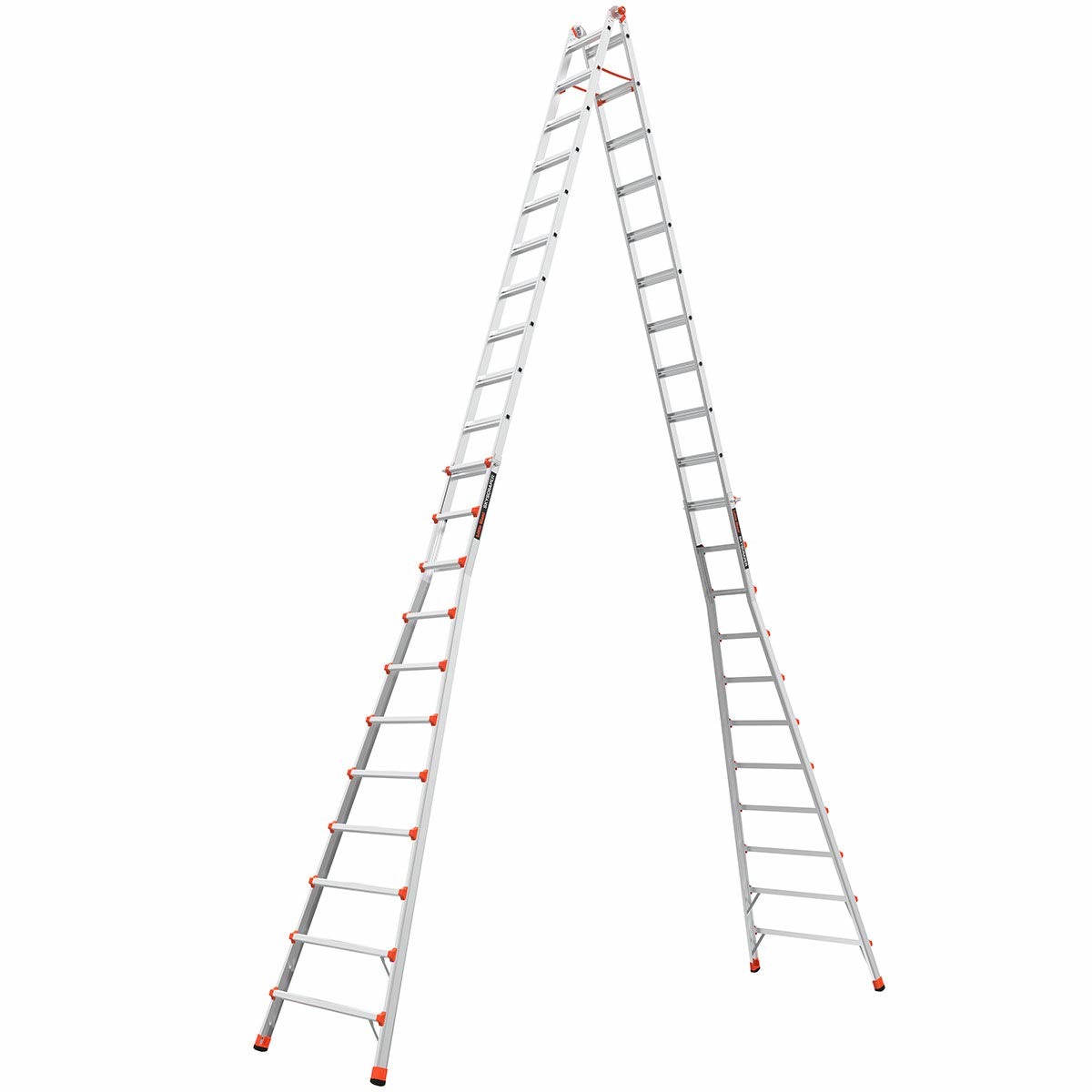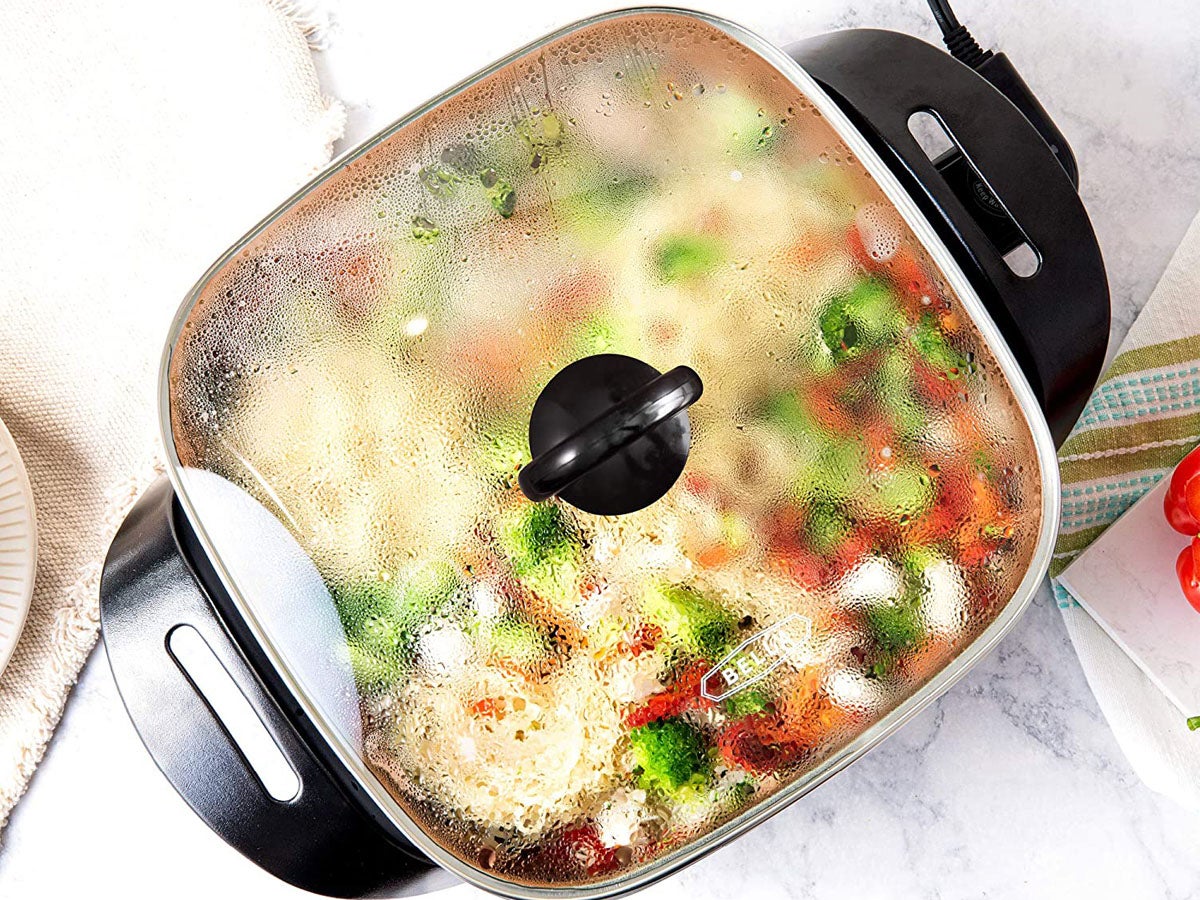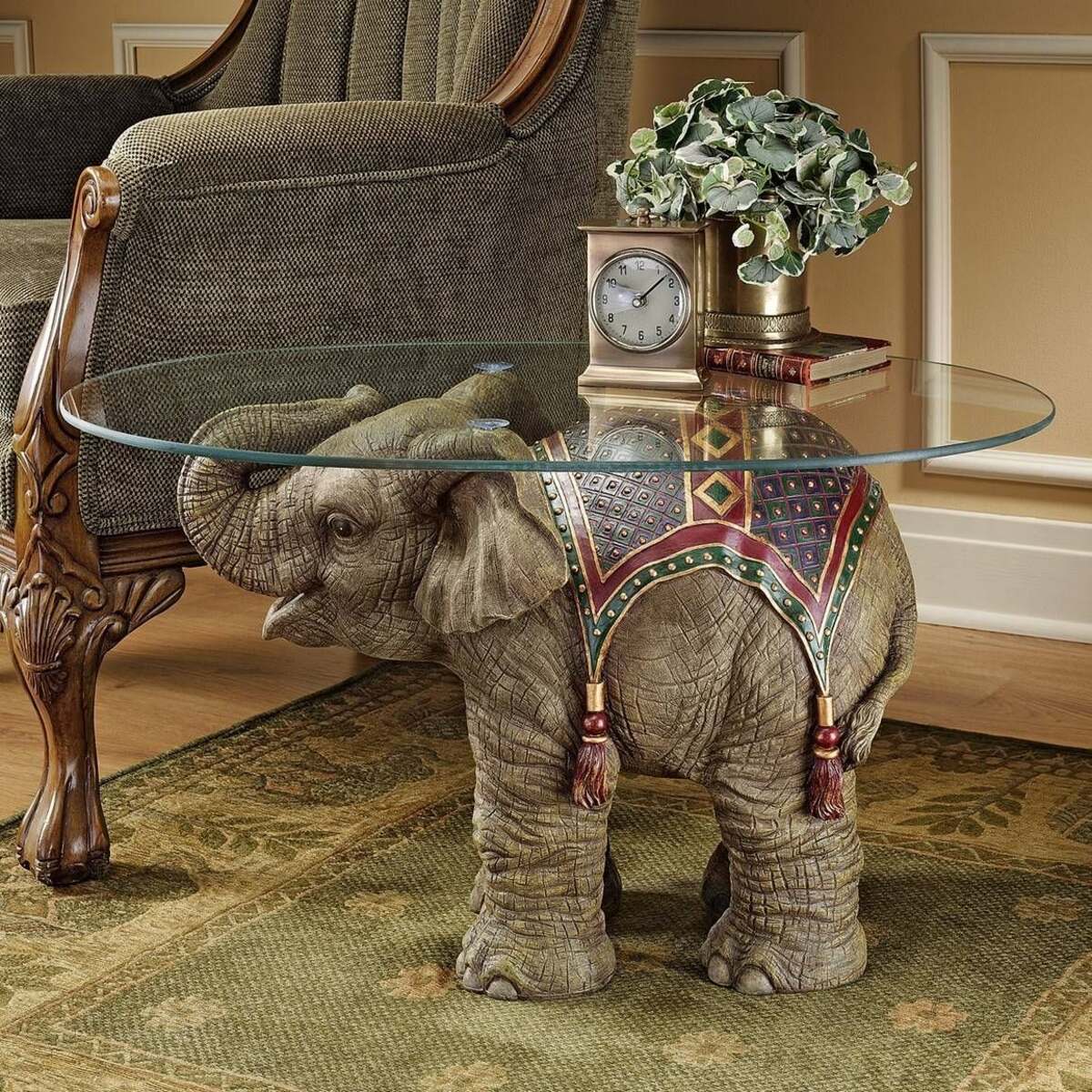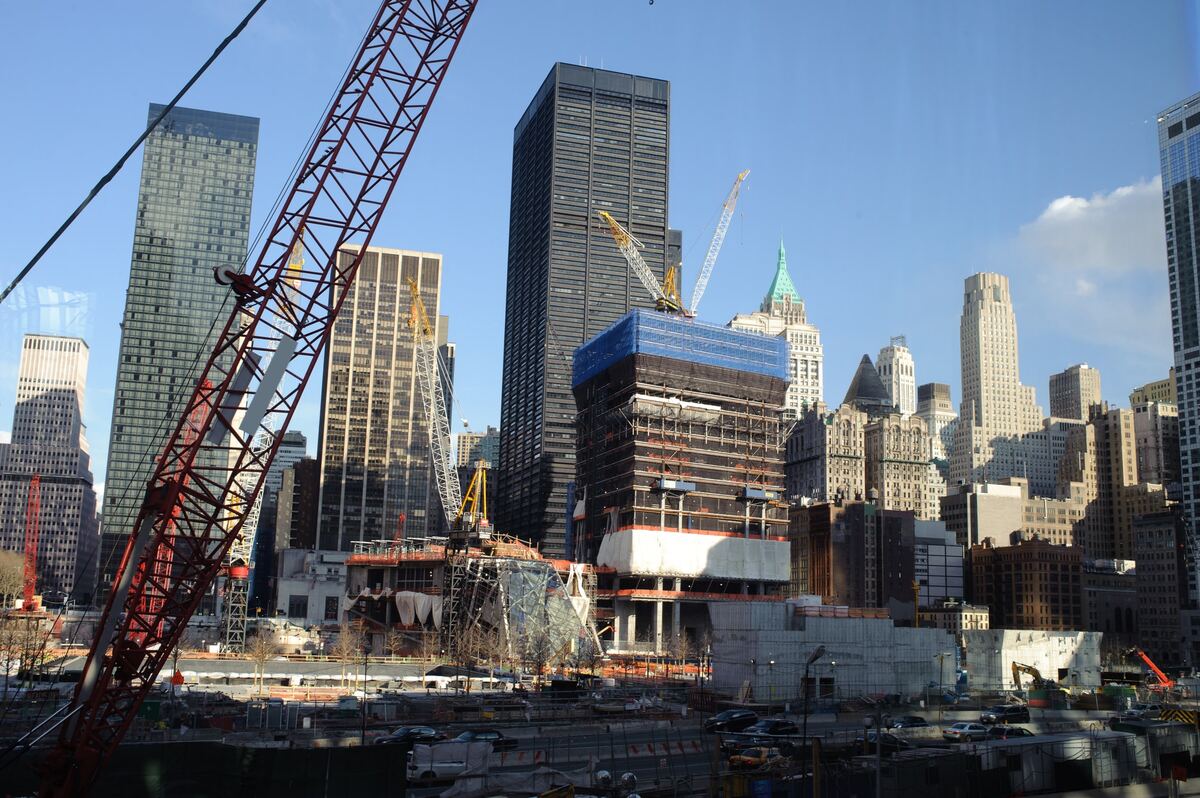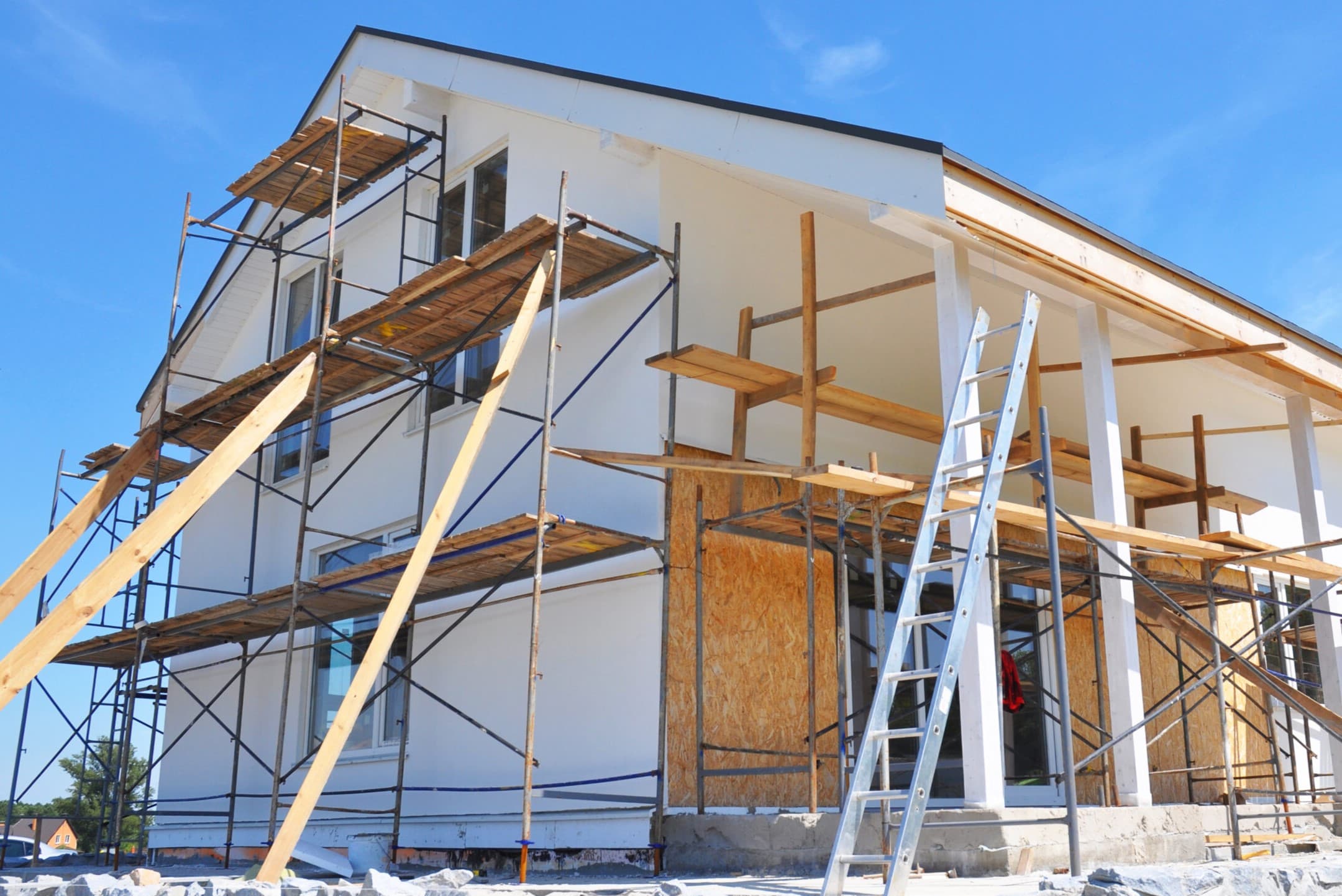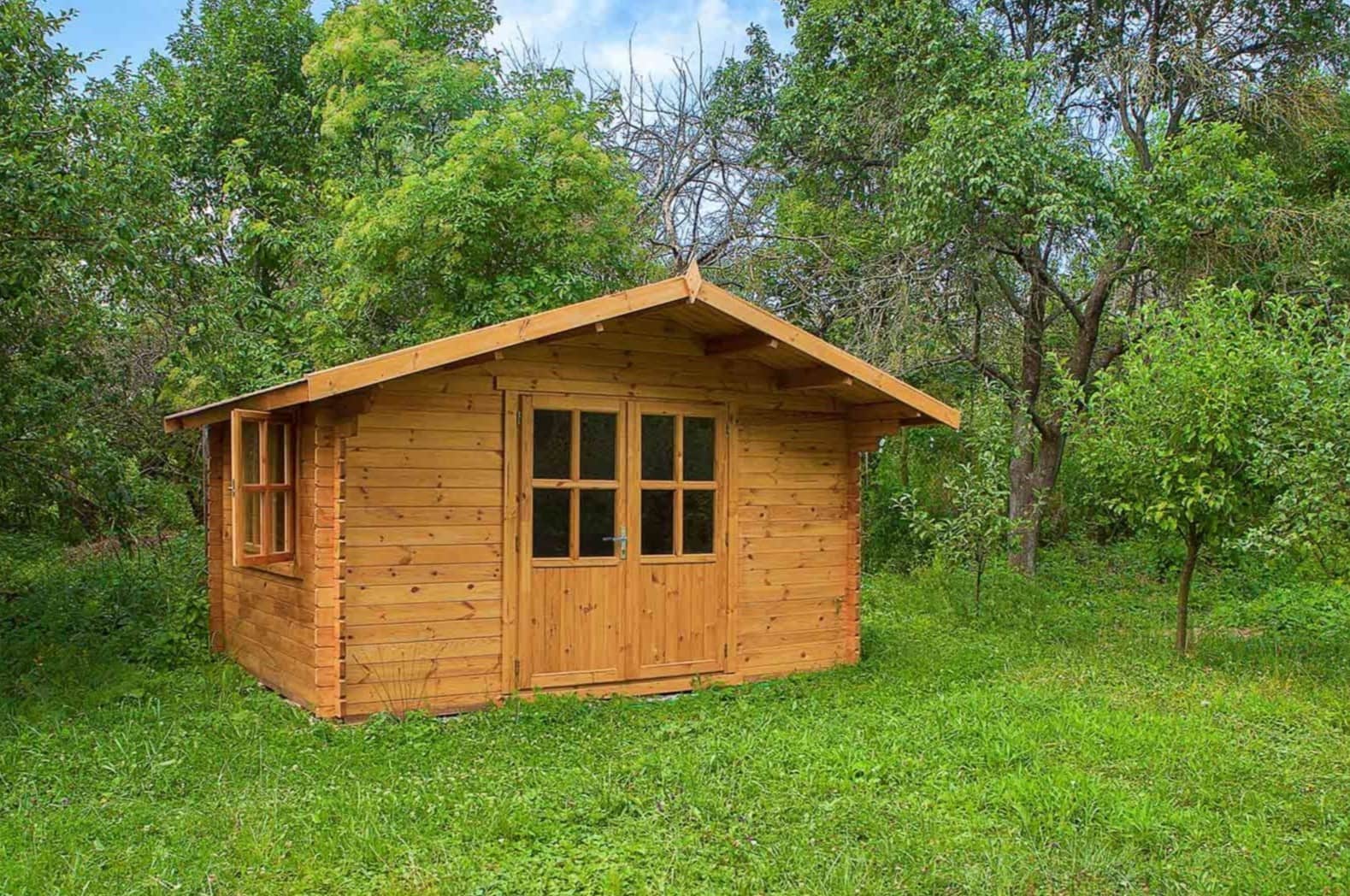Home>Home Maintenance>What Are The Biggest Trends In Home Maintenance Or Repair
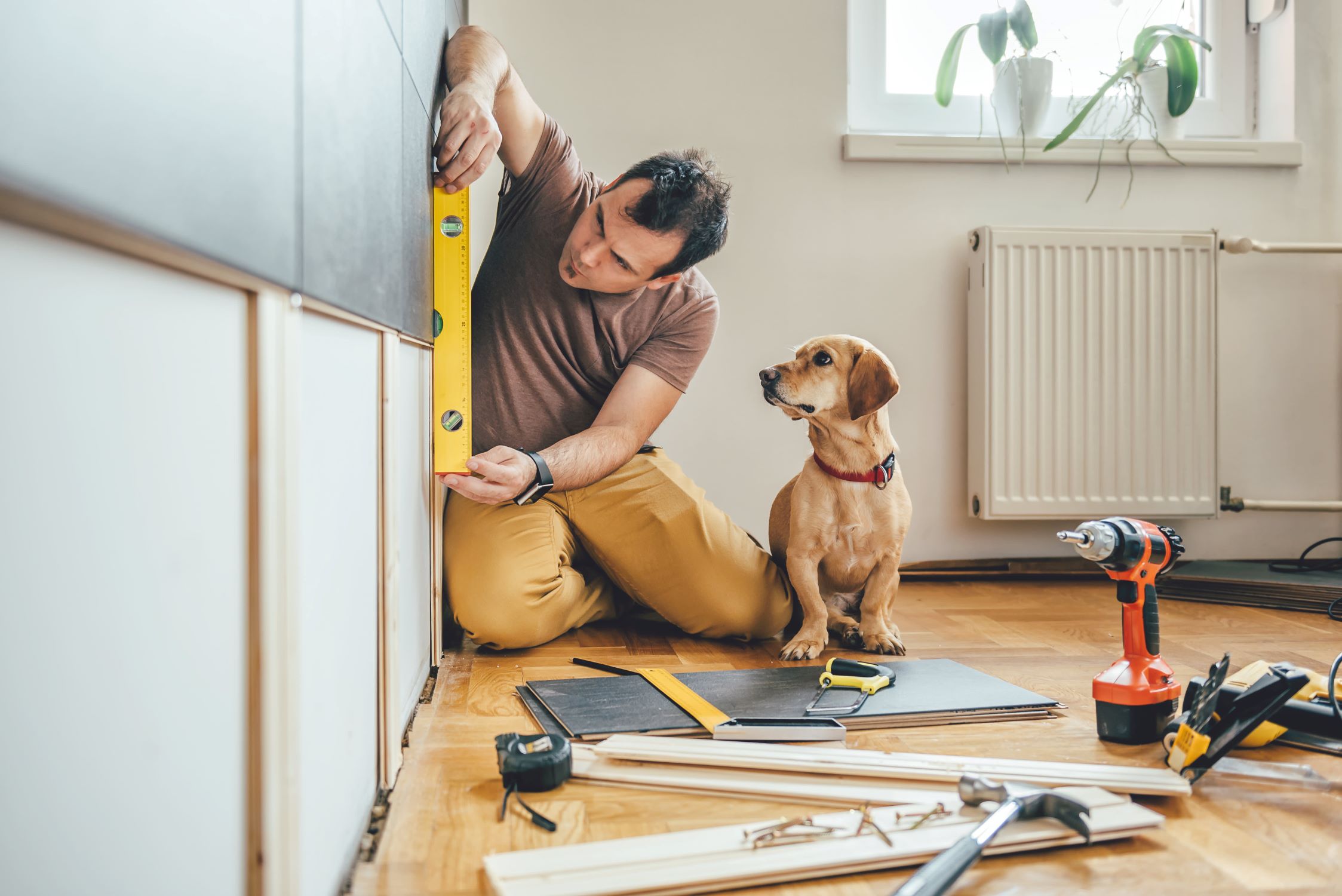

Home Maintenance
What Are The Biggest Trends In Home Maintenance Or Repair
Modified: April 23, 2024
Discover the latest trends in home maintenance and repair. Get expert tips and advice on how to keep your home in top shape with our comprehensive guide.
(Many of the links in this article redirect to a specific reviewed product. Your purchase of these products through affiliate links helps to generate commission for Storables.com, at no extra cost. Learn more)
Introduction
Welcome to the world of home maintenance and repair, where trends and innovations constantly shape the way we care for and improve our living spaces. In recent years, there has been a significant shift in focus towards sustainable and energy-efficient solutions, as well as the integration of smart home technology. Additionally, the rise of the do-it-yourself (DIY) culture and the accessibility of online tutorials have empowered homeowners to take on more projects themselves.
With the goal of creating safe, comfortable, and beautiful homes, it’s important to stay informed about the latest trends in home maintenance and repair. In this article, we will explore some of the biggest trends and developments in the field, providing valuable insights and inspiration for homeowners.
Key Takeaways:
- Embrace sustainability by using renewable energy, eco-friendly materials, and energy-efficient upgrades to reduce your carbon footprint and lower utility bills while living in harmony with the environment.
- Transform your home with smart technology, DIY projects, and aging-in-place modifications to create a comfortable, safe, and personalized living space that promotes well-being and sustainability.
Read more: What Is Trending In Home Decor In 2024
Increasing focus on sustainability
In recent years, there has been a growing awareness and concern for the environment, leading to an increased focus on sustainability in home maintenance and repair. Homeowners are seeking ways to reduce their carbon footprint and minimize their impact on the planet. This shift towards sustainability encompasses various aspects of home maintenance, from energy-efficient upgrades to eco-friendly materials and practices.
One of the prominent trends in sustainable home maintenance is the adoption of renewable energy sources. Solar panels have become more affordable and accessible, allowing homeowners to harness the power of the sun to generate electricity. By installing solar panels on rooftops, homeowners can not only reduce their reliance on traditional fossil fuel-based energy sources but also save on their utility bills in the long run.
In addition to renewable energy, another aspect of sustainability in home maintenance is water conservation. With the increasing scarcity of water resources in many parts of the world, homeowners are seeking ways to minimize water wastage. This can be achieved through the installation of low-flow faucets and showerheads, as well as smart irrigation systems that optimize water usage for gardens and lawns.
Furthermore, the use of eco-friendly building materials is gaining momentum in home maintenance and repair. Homeowners are opting for materials that have a lower environmental impact, such as bamboo flooring, reclaimed wood, and recycled glass countertops. These materials not only reduce the consumption of finite resources but also promote healthier indoor air quality.
To supplement the use of sustainable materials, homeowners are also exploring environmentally-friendly practices in their daily maintenance routines. This includes the use of non-toxic cleaning products, proper waste management and recycling, as well as adopting energy-saving habits like turning off lights and appliances when not in use.
Overall, the increasing focus on sustainability in home maintenance highlights the desire of homeowners to live in harmony with the environment. By implementing energy-efficient upgrades, using eco-friendly materials, and practicing sustainable habits, homeowners can make a positive impact on the planet while enjoying the long-term benefits of reduced energy costs and improved comfort in their homes.
Smart home technology integration
The rapid advancement of technology has revolutionized various aspects of our lives, and home maintenance and repair are no exception. Smart home technology has become increasingly popular among homeowners, offering convenience, efficiency, and enhanced security.
One of the key aspects of smart home technology integration is home automation. Homeowners can now control various aspects of their homes, such as lighting, temperature, security systems, and even appliances, with the touch of a button or a simple voice command. This level of control not only improves convenience but also allows for better energy management.
For example, smart thermostats have gained popularity for their ability to learn and adapt to homeowners’ preferences, optimizing energy usage and reducing utility bills. These devices can adjust the temperature based on occupancy and can be controlled remotely via smartphones, ensuring a comfortable atmosphere while saving energy when no one is at home.
Another area where smart home technology is making its mark is in home security systems. With the integration of cameras, motion sensors, and smart locks, homeowners can monitor their homes remotely, receive notifications on their smartphones in case of any unusual activity, and even grant access to visitors or service providers from anywhere in the world.
In addition to automation and security, smart home technology is also transforming the way we manage energy consumption. Home energy monitoring systems provide real-time insights into energy usage, allowing homeowners to identify areas of high consumption and make adjustments to reduce waste. These systems can also integrate with renewable energy sources, such as solar panels, to further optimize energy production and utilization.
As smart home technology continues to evolve, homeowners are also benefiting from the integration of artificial intelligence (AI) and voice assistant technology. Voice-activated assistants like Amazon Alexa and Google Assistant can control smart home devices, answer questions, provide reminders, and even assist with home maintenance tasks by offering step-by-step instructions or connecting users with relevant service providers.
Overall, the integration of smart home technology in maintenance and repair offers homeowners greater control, convenience, and energy efficiency. With the ability to automate various aspects of their homes, monitor security remotely, and optimize energy usage, homeowners can create a more comfortable and connected living environment.
Energy efficiency improvements
With the rising concern over climate change and the need to conserve energy, there has been a significant focus on energy efficiency improvements in home maintenance and repair. Homeowners are seeking ways to reduce energy consumption and lower their utility bills while minimizing their environmental impact. This has led to the development and adoption of various energy-saving technologies and practices.
One of the key areas of energy efficiency improvements is in insulation. Proper insulation in walls, roofs, and floors helps to reduce heat transfer, keeping homes cooler in the summer and warmer in the winter. This reduces the reliance on heating and cooling systems, resulting in lower energy consumption and costs. Additionally, well-insulated homes provide a more comfortable living environment and improve overall energy efficiency.
Another aspect of energy efficiency improvements is the installation of energy-efficient windows and doors. These windows and doors are designed to minimize heat loss or gain, effectively sealing the home from external temperature fluctuations. Energy-efficient windows and doors also contribute to improved sound insulation and can protect against harmful UV rays, preserving the integrity of furniture and artwork.
Upgrading to energy-efficient appliances is another effective way to improve energy efficiency in the home. Energy Star certified appliances, such as refrigerators, washing machines, and dishwashers, are designed to consume less energy while maintaining optimal performance. By replacing outdated appliances with energy-efficient models, homeowners can save on energy costs and reduce their carbon footprint.
Furthermore, the integration of smart home technology mentioned earlier also plays a role in energy efficiency improvements. Smart thermostats, for example, can learn homeowners’ habits and adjust the temperature accordingly, optimizing energy usage. Additionally, smart home systems can detect and notify homeowners of energy-wasting devices or appliances, allowing them to make informed decisions on energy conservation.
Renewable energy solutions, such as solar panels, also contribute to energy efficiency improvements. By generating clean and sustainable energy from the sun, homeowners can significantly reduce their reliance on traditional energy sources. In some cases, homeowners can even sell excess energy back to the grid, further offsetting their energy costs and promoting a greener future.
Overall, energy efficiency improvements in home maintenance and repair are essential for reducing energy consumption, lowering utility bills, and minimizing environmental impact. By focusing on insulation, upgrading to energy-efficient windows and appliances, utilizing smart home technology, and exploring renewable energy options, homeowners can create more sustainable and energy-efficient homes.
DIY culture and online tutorials
In recent years, there has been a significant rise in the do-it-yourself (DIY) culture, driven by the accessibility of online tutorials and resources. This trend has had a profound impact on home maintenance and repair, as homeowners are now empowered to take on a wide range of projects themselves, saving on costs and gaining a sense of accomplishment.
One of the key factors contributing to the growth of the DIY culture is the abundance of online tutorials and instructional videos. Platforms like YouTube, blogs, and websites dedicated to DIY projects have made it easier than ever for homeowners to access step-by-step guides and learn new skills. Whether it’s fixing a leaky faucet, painting walls, or even installing hardwood flooring, homeowners can find detailed tutorials for almost any home maintenance task.
The availability of online tutorials allows homeowners to save money by avoiding the need to hire professional contractors for every small repair or improvement. DIY enthusiasts can now confidently tackle projects and customize their homes to their own preferences. This not only provides financial savings but also enables homeowners to add a personal touch and create unique spaces.
Moreover, DIY home maintenance and repair projects can be a fun and rewarding experience. Many homeowners enjoy the sense of accomplishment and satisfaction that comes from taking care of their own homes. DIY projects also foster a deeper connection to the living space and can strengthen homeowners’ knowledge of home maintenance practices.
Although the DIY culture offers a host of benefits, it is important to acknowledge the limitations. While minor repairs and smaller projects may be suitable for DIY, more complex tasks, such as electrical work or structural modifications, should be left to professionals. It is crucial to prioritize safety and seek professional assistance when necessary.
Additionally, the DIY trend has also led to a surge in the availability of DIY-friendly products on the market. Many manufacturers now offer user-friendly tools, materials, and kits specifically designed for DIY enthusiasts. These products often come with detailed instructions and simplified installation techniques, making it even easier for homeowners to complete projects confidently.
Overall, the DIY culture and the abundance of online tutorials have transformed the way homeowners approach home maintenance and repair. From minor fixes to major renovations, homeowners now have the opportunity to learn new skills, save money, and personalize their living spaces. By striking a balance between what can be done effectively as a DIY project and when professional help is needed, homeowners can embrace the DIY culture while ensuring the safety and integrity of their homes.
Regularly inspect and maintain your home’s exterior to prevent costly repairs. Look for signs of water damage, peeling paint, and cracks in the foundation. Keep gutters clean and trim trees to prevent damage from falling branches.
Read more: What Is The Biggest Bed Size
Aging-in-place modifications
The aging population is growing, and many homeowners are opting to stay in their homes as they age rather than moving to assisted living facilities or retirement communities. This has given rise to the concept of aging-in-place modifications, which focus on making homes more accessible, safe, and comfortable for older individuals.
One of the key aspects of aging-in-place modifications is improving mobility and accessibility within the home. This can include the installation of ramps or lifts to eliminate barriers for individuals with mobility challenges. Widening doorways and hallways to accommodate wheelchairs or walkers is also common, as well as installing grab bars and handrails for support and stability.
Another important consideration is the modification of bathrooms to enhance safety and convenience. Walk-in showers with grab bars and seating options, as well as raised toilets, can prevent slips and falls. Non-slip flooring and well-placed lighting are also essential in reducing the risk of accidents and improving visibility.
Kitchen modifications are also integral to aging in place. Lowering countertop heights and installing pull-out shelves or drawers make it easier for individuals with limited mobility to access items. Lever-style handles on faucets and easy-to-use appliances are additional modifications that can greatly enhance independence and functionality in the kitchen.
Technology also plays a crucial role in aging-in-place modifications. Smart home devices, such as voice-activated assistants and automated lighting systems, can provide convenience and ease of use for older individuals. Medical alert systems and wearable devices can offer peace of mind to both the individual and their loved ones, ensuring assistance is available in case of emergencies.
Aging-in-place modifications are not solely focused on practical aspects but also on creating a comfortable and enjoyable living environment. This can include features like adjustable lighting, temperature controls, and well-designed living spaces that accommodate changing needs and preferences as individuals age.
While aging-in-place modifications primarily cater to older individuals, they can also benefit individuals with disabilities or temporary mobility issues. By creating a more accessible and user-friendly home environment, homeowners can provide a greater sense of independence and improve the overall quality of life.
It is important to note that aging-in-place modifications should be personalized to meet individual needs and take into account specific health conditions or challenges. Consulting with professionals, such as occupational therapists or certified aging-in-place specialists, can ensure that modifications are tailored to the homeowner’s unique requirements.
By incorporating aging-in-place modifications, homeowners can continue to enjoy the comfort and familiarity of their homes while maintaining independence and safety as they age.
Health and safety enhancements
Ensuring a safe and healthy living environment is a top priority for homeowners. As a result, there is a growing emphasis on incorporating health and safety enhancements into home maintenance and repair. These enhancements focus on creating spaces that promote physical well-being, minimize health risks, and provide peace of mind for homeowners and their families.
One of the key areas of health and safety enhancements is indoor air quality. Poor indoor air quality can lead to various health issues, including respiratory problems and allergies. Homeowners are increasingly investing in air purification systems and improving ventilation to remove pollutants, allergens, and toxins from the air. This can be achieved through the regular cleaning and maintenance of HVAC systems, as well as the use of air filters and ventilation fans.
Another important consideration is the reduction of potential hazards within the home. This can involve ensuring proper electrical wiring and grounding, as well as regularly checking and replacing faulty or outdated electrical fixtures and appliances. Installing smoke detectors, carbon monoxide detectors, and fire extinguishers are essential safety measures to protect against potential hazards and provide early warning in case of emergencies.
Additionally, homeowners are taking steps to create a healthy and safe living environment by minimizing the use of toxic materials. This includes using low-VOC (volatile organic compounds) paints and finishes, as well as choosing eco-friendly and non-toxic cleaning products. By opting for healthier alternatives, homeowners can improve indoor air quality and reduce the exposure to harmful chemicals.
Ensuring proper lighting throughout the home is also important for both safety and overall well-being. Well-lit spaces help prevent accidents and improve visibility, especially in areas prone to slips, trips, and falls. Homeowners are increasingly installing energy-efficient LED lighting and incorporating natural light through the strategic placement of windows and skylights.
Moreover, health and safety enhancements extend beyond the interior of the home to the outdoor spaces. Proper landscaping techniques, such as ensuring adequate drainage and regular maintenance of walkways and driveways, can prevent accidents and injuries. Installing outdoor lighting and security systems further enhance safety and deter potential intruders.
Homeowners are also increasingly aware of the importance of routine maintenance and inspections. Regularly checking and maintaining essential systems, such as plumbing, electrical, and HVAC, can help identify and address potential issues before they escalate. Conducting regular home inspections, including roof inspections, can uncover hidden problems and ensure that the overall structure of the home is sound.
By prioritizing health and safety enhancements, homeowners can create a living environment that promotes well-being, reduces health risks, and provides peace of mind for themselves and their families.
Outdoor living space enhancements
Outdoor living spaces have become an extension of our homes, offering a place to relax, entertain, and enjoy the beauty of nature. As homeowners seek to maximize their outdoor living potential, there has been a growing trend towards enhancing these spaces with innovative designs and amenities.
One of the key aspects of outdoor living space enhancements is the creation of functional and comfortable seating areas. Whether it’s a cozy patio, a spacious deck, or a stylish pergola, homeowners are investing in comfortable outdoor furniture that withstands the elements while providing a welcoming and relaxing atmosphere. Additionally, incorporating features like outdoor fireplaces or fire pits allows for year-round enjoyment and creates a cozy ambience during colder months.
Outdoor cooking and dining areas have also gained popularity, as homeowners seek to bring the joy of cooking and dining al fresco. The addition of outdoor kitchens, complete with grills, countertops, sinks, and storage, allows for seamless outdoor entertaining and eliminates the need to constantly run back and forth between the indoor and outdoor spaces. Additionally, outdoor dining spaces equipped with weather-resistant tables, chairs, and lighting provide the perfect setting for delightful meals under the open sky.
Homeowners are also embracing the beauty and tranquility of water features in their outdoor spaces. Whether it’s a tranquil pond, a cascading waterfall, or a stylish fountain, the addition of water elements enhances the aesthetics and creates a soothing environment. Water features can provide a focal point, mask background noise, and attract birds and wildlife, adding to the overall charm of the outdoor space.
Gardens and landscaping play a vital role in outdoor living space enhancements. Homeowners are incorporating a variety of plants, flowers, and trees to create aesthetically pleasing and vibrant outdoor environments. Vertical gardens and living walls have also become popular, maximizing space while adding a touch of greenery and natural beauty. Additionally, integrating sustainable gardening practices, such as rainwater harvesting and native plant selections, aligns with the overarching trend of sustainability in home maintenance and adds ecological value to the outdoor space.
Outdoor entertainment systems have transformed the way homeowners enjoy the outdoors. From weatherproof televisions to wireless speakers, homeowners can create immersive entertainment experiences in their outdoor spaces. Whether it’s watching movies under the stars or hosting game nights, outdoor entertainment systems bring the comforts of indoor entertainment to the beauty of the great outdoors.
Lighting also plays a crucial role in outdoor living space enhancements. Well-placed lighting fixtures not only enhance the ambiance but also provide safety and security during nighttime. From soft string lights to pathway lighting, homeowners can create a welcoming and inviting atmosphere while ensuring visibility and ease of movement.
With the increasing desire to connect with nature and create inviting outdoor retreats, outdoor living space enhancements offer homeowners the opportunity to enjoy nature while maximizing the functionality and beauty of their properties. Whether it’s creating a cozy seating area, building an outdoor kitchen, incorporating water features, or embracing sustainable gardening practices, outdoor living spaces can truly transform the way we experience and enjoy our homes.
Minimalist and decluttering movements
In an era of consumerism and excess, the minimalist and decluttering movements have emerged as a response to the desire for a simpler, more intentional way of living. These movements advocate for reducing material possessions and creating clutter-free spaces, which has had a significant impact on home maintenance and repair.
One of the core principles of the minimalist movement is to remove unnecessary items and focus on what truly brings joy and meaning to our lives. This mindset translates into our homes, where homeowners are decluttering their living spaces and adopting a more minimalist approach to décor and furnishings.
Decluttering involves letting go of items that no longer serve a purpose or bring value to our lives. This can be achieved through practices like Marie Kondo’s KonMari method, where homeowners evaluate each item and keep only those that spark joy. By decluttering, homeowners create a more organized and visually appealing environment, allowing for easier cleaning and maintenance.
The impact of the minimalist and decluttering movements goes beyond aesthetics. It also promotes efficient use of space and encourages the utilization of multifunctional furniture and storage solutions. For example, homeowners are opting for furniture with built-in storage, such as ottomans with hidden compartments or beds with under-bed storage drawers, to maximize space and reduce clutter.
Furthermore, the minimalist and decluttering movements have influenced the way homeowners approach home maintenance and repair. By focusing on a more minimalist lifestyle, there is a shift towards prioritizing quality over quantity. This means investing in well-made, durable products that require less maintenance and have a longer lifespan.
The concept of minimalism also extends to the design and layout of homes. Clean lines, open spaces, and uncluttered surfaces are characteristic of minimalist design. This design approach not only creates a sense of calm and serenity but also simplifies maintenance and cleaning processes.
With the increased awareness of the environmental impact of consumerism, decluttering and embracing minimalism can also contribute to sustainability efforts. By reducing and reusing items, homeowners can minimize waste and contribute to a more sustainable lifestyle. Additionally, by eliminating excess belongings, homeowners can reduce their energy consumption and carbon footprint in terms of storage and maintenance requirements.
Embracing minimalism and decluttering in home maintenance and repair offers numerous benefits, including reduced stress, increased efficiency, improved aesthetics, and a more sustainable lifestyle. It encourages homeowners to focus on what truly matters and create spaces that reflect their values and promote a sense of well-being.
However, it is important to remember that minimalism and decluttering are personal choices, and each individual should find a balance that suits their lifestyle and comfort level. The goal is not to live with nothing but to live with things that bring joy and add value to our lives.
Read more: What Are The Latest Home Decor Trends
Conclusion
Home maintenance and repair have evolved significantly in recent years, shaped by various trends and advancements that aim to enhance our living spaces. From increasing focus on sustainability to the integration of smart home technology, homeowners now have more options than ever to create comfortable, efficient, and visually appealing homes.
The rising interest in sustainability has driven the adoption of renewable energy sources, eco-friendly materials, and energy-efficient upgrades. Homeowners are now able to reduce their carbon footprint, lower utility bills, and live in harmony with the environment.
The integration of smart home technology has revolutionized the way we interact with our homes, offering convenience, security, and energy management. From automated systems to voice-activated assistants, homeowners can control various aspects of their homes with ease.
Energy efficiency improvements have become a priority as homeowners seek to reduce energy consumption and lower costs. Upgrading insulation, using energy-efficient appliances, and implementing smart home systems optimize energy usage and contribute to a greener future.
The growth of the DIY culture and the abundance of online tutorials have empowered homeowners to take on home maintenance and repair projects themselves. From minor fixes to major renovations, homeowners can learn new skills, save money, and customize their living spaces.
Aging-in-place modifications have become increasingly important as homeowners choose to stay in their homes as they age. By improving accessibility, safety, and comfort, individuals can maintain their independence and enjoy their homes for years to come.
Health and safety enhancements have become a significant consideration in home maintenance and repair. From improving indoor air quality to reducing hazards and embracing proper lighting, homeowners create environments that promote well-being and provide peace of mind.
Outdoor living space enhancements have transformed outdoor areas into functional and aesthetically pleasing extensions of our homes. By incorporating comfortable seating areas, outdoor kitchens, water features, and entertainment systems, homeowners can create inviting spaces to relax, entertain, and connect with nature.
Lastly, the minimalist and decluttering movements have influenced the way homeowners approach home maintenance and repair. By decluttering and embracing minimalist design, homeowners can create organized, visually appealing spaces that promote efficiency, sustainability, and a sense of calm and tranquility.
In conclusion, staying up-to-date with the trends and advancements in home maintenance and repair allows homeowners to create beautiful, comfortable, and sustainable living spaces. By implementing these trends and embracing innovations, homeowners can enhance their homes, improve their quality of life, and make a positive impact on the environment.
Frequently Asked Questions about What Are The Biggest Trends In Home Maintenance Or Repair
Was this page helpful?
At Storables.com, we guarantee accurate and reliable information. Our content, validated by Expert Board Contributors, is crafted following stringent Editorial Policies. We're committed to providing you with well-researched, expert-backed insights for all your informational needs.

